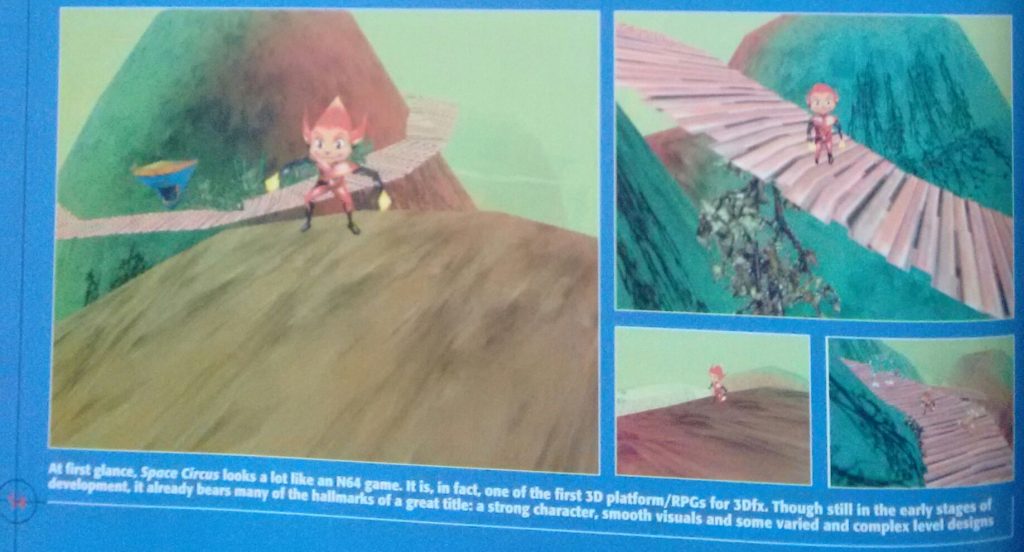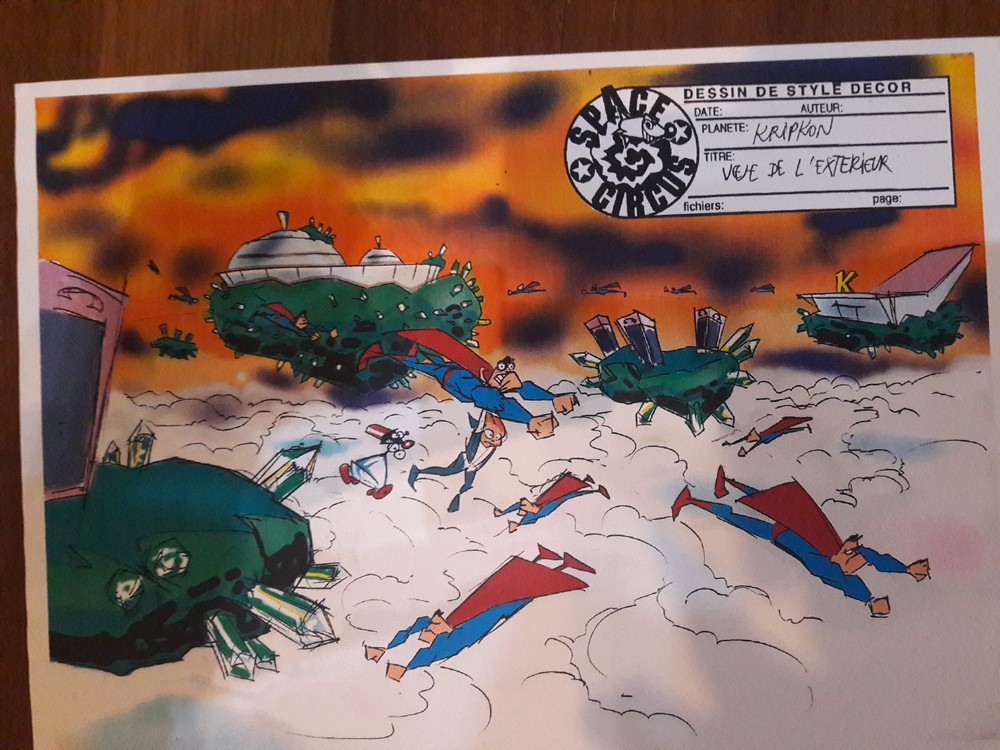![]()
Mission: Impossible is an action game / third-person shooter for the Nintendo 64, based on the 1996 film Mission: Impossible. It was developed by Ocean Software and distributed by Infogrames Entertainment. It later received a PlayStation port, with minor additions such as voice acting, but reduced graphics.
The N64 version was released in 1998, after it was postponed for many years. The game was originally announced in March 1996 as one of the first titles in development for the new 64-bit console. Ocean even confirmed that the game would had some special features for the Nintendo 64DD, but obviously there is no such option in the final game.
The very first images released looked like an High-Definition version of the game, with a cleaner graphic that was unthinkable for the real N64 hardware. Today these screens can make us to smile, but in 1996 these target renders were the most beautiful graphic ever. The final version of the game had no such graphic detail, with blurred out polygons and textures.
Unfortunately none of the U64 staff has played Mission Impossible 64, so we don’t know if the scenes in these beta screens were ported somehow in the final version. If you played Mission Impossible 64 and notice any differences, please let us know!
Thanks to RagingD and John Doom we found out some more details about the differences in these early screens:

This level only ends up being a cutscene in the final version.

The wet suit is not in the final version

This suit is changed from white to red in the final version
Screen 1: It’s the exit from the KGB HQ
Screen 2: This stage it’s not in the game
Screen 3: She (should be) Candice Parker in the prison of the KGB HQ. However, in the game she has a different hair cut.
Screen 4: A room in the KGB HQ where it should be a missing agent (but in the screen he isn’t there)
Screen 5: KGB HQ’s closet (But in the game you can’t drag enemies’s corpses).
Screen 6: The stage is not in the game (and who is that guy? o.o)
Screen 7: Same as above
Screen 8: Another missing level
Screen 9: Missing level (And the hud is VERY different)
Screen 10: Missing level
Screen 11: A cutscene (as RagingD said)
Screen 12: ??? maybe it’s the first level (but I’m not so sure…)
Screen 13: Head Security Officer’s room (but in the game there is a Communist flag instead of an american flag. The situation in the screen it’s totally different from the game too)
Screen 14: The second level (but in the game Ethan wears a different suit)
Screen 15: ??? Maybe it’s the hallway to exit from the KGB
Screen 16: The embassy (but the Lenin’s statue is missing)
Screen 17: Head Security Officer’s room as in the game (but the suit is different, just as RagingD said, and Ethan looks more Tom Cruise than in the game)
Screen 18: It seems a beta embassy’s room because the door and the plants are the same of the game). Or it could be a totally different level missing in th game.
Screen 19: The secret room in the KGB as in the game
Screen 20: it seems the entry to that beta-embassy. (the hud is totally different)
Screen 22: It’s probably a beta first level
Screen 23: First level
Screen 24: It could be a beta version of the escaping level from the KGB HQ
Screen 25: A beta version of the Head Security Officer’s room
Screen 26: Maybe is a beta version of the escaping level from the KGB HQ (but the enemy is totally different from the one in the game)
Screen 29: The bathroom in the embassy and the Deputy Ambassador (but the mirrors don’t reflect in the n64 version)
Screen 30: ???
Screen 32: VR sequence?
Mission Impossible 64 remains without doubt one of the most fascinating beta games to look at, to have an idea of what were the expectations of the gamers about the new Nintendo hardware. We dreamed for months to play with this high level of graphic with the Nintendo 64, but only with the release of the Dreamcast we were able to have something that looked as clean as the original Mission Impossible 64 target renders.
A sequel, Mission Impossible 2, was announced in 1999, but it was soon cancelled for the N64. MI2 was going to be developed for the Dreamcast, but when Infogrames lost the Mission Impossible license, the game became “La Femme Nikita” for the Playstation 2, cancelled after 2 years of development.
Thanks to Robert Seddon for some of these screens and to RagingD and John Doom for the contributions!
![]() [spoiler /Clicca qui per la versione in Italiano/ /Nascondi la versione in Italiano/]Uscito solo nella metà del 1998, Mission Impossible per Nintendo 64 ha dovuto aspettare alcuni anni, prima di essere completato. Il gioco fu infatti annunciato nel marzo del 1996, come uno dei primi titoli in sviluppo per la nuova console a 64 bit. Ocean confermò addirittura la presenza di alcune caratteristiche speciali, che sarebbero state sbloccate grazie ad un espansione per 64DD. Ovviamente nessuna opzione per 64DD è presente nel gioco finale.
[spoiler /Clicca qui per la versione in Italiano/ /Nascondi la versione in Italiano/]Uscito solo nella metà del 1998, Mission Impossible per Nintendo 64 ha dovuto aspettare alcuni anni, prima di essere completato. Il gioco fu infatti annunciato nel marzo del 1996, come uno dei primi titoli in sviluppo per la nuova console a 64 bit. Ocean confermò addirittura la presenza di alcune caratteristiche speciali, che sarebbero state sbloccate grazie ad un espansione per 64DD. Ovviamente nessuna opzione per 64DD è presente nel gioco finale.
Le primissime immagini diffuse erano una versione esagerata delle capacità 3D del N64: visuali ad alta definizione (almeno per l’epoca) ed una pulizia grafica impensabile per l’hardware Nintendo. Oggi queste foto possono farci sorridere, ma nel 1996 la grafica sembrava davvero realistica. Come già successo per altri giochi, presentati durante le fasi iniziali dell’Ultra 64, gli screenshot si riferivano probabilmente ad una serie di tech demo, creati per avere un’idea di come sarebbe stato Mission Impossible su di una console a 64 bit. Le specifiche tecniche del Nintendo 64 si rivelarono però meno potenti del previsto, ed il gioco completo è in realtà più sfocato e poco definito, rispetto a quanto volevano farci credere inizialmente.
Purtroppo nessuno dello staff ha mai giocato a Mission Impossible 64 e non possiamo quindi riconoscere se le situazioni qui mostrate siano presenti nella versione completa, oppure erano semplicemente degli scenari provvisori. Se avete finito M:I 64 e notate qualche differenza nei livelli, saremmo felici di ricevere una vostra e-mail con queste informazioni!
Gli Unseen di Mission Impossible 64 rimangono senza dubbio fra i più affascinanti da osservare, per avere un idea di quali erano le aspettative delle software house, rispetto al nuovo hardware Nintendo. Milioni di videogiocatori hanno sognato per mesi di poter avere una simile qualità grafica nei propri videogames, ma solamente con l’uscita del Dreamcast hanno potuto avvicinarsi all’aspetto che mostrava questo Tech Demo di M:I.
Un seguito del gioco era stato annunciato, ma presto cancellato senza lasciare nessuna traccia.[/spoiler]
Images:


